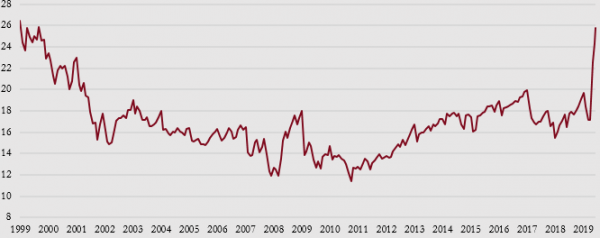Scenarios
A significant input into our investment process is the construction of probability weighted, plausible scenarios representing alternative paths for the global economy.
These scenarios help us to frame our ‘central’ view on the most likely outcomes for economic growth over the next 12 to 18 months, but also assist in identifying and quantifying alternative outcomes, and therefore risks (both positive and negative), to our central view.
Our scenario analysis is centred on the pace of economic recovery and whether lost output is recovered over the next 12 to 18 months or takes significantly longer.
Damage to the global economy from Covid-19 and the subsequent lockdowns of society and the economy is still opaque, but we can be confident that the second quarter will be the trough in terms of lost output and negative rates of economic growth. Estimates of negative GDP of -10% to -12% in the second quarter look reasonable.
Policy stimulus, both fiscal and monetary, has been unprecedented and needs to be considered as a possible influence on market outturns.
Inflation is another hugely important consideration, not least for the valuation of the market and potential returns. We believe there is a tail risk, not present before, that inflation picks up meaningfully in the longer term, but near-term pricing pressures are clearly very weak.
We ascribe very low probability to a prolonged recession, in which the initial economic bounce is limited and the recovery anaemic, and to a V-shaped recovery, in which output rebounds to 2019 levels by early next year and trend growth resumes.
We give some credence to the scenario in which, after a reasonable initial bounce, the economy struggles to gain much momentum due to second waves of infection, prolonged social distancing, unemployment and weak consumer confidence. Economic output remains below 2019 levels until late 2022.
Our highest probability goes to the scenario whereby there is a slow normalisation in the economy which sees the economy, and corporate earnings, recover their lost ground by the end of next year.
Macro drivers
After the collapse in activity in March and April, we saw a definite pick-up in macroeconomic data in May.
Most economic data points are at levels still in deep recessionary territory, but they have bounced strongly from the record lows of the previous month.
As an example, European PMIs, which survey business sentiment, rebounded from 13 to 31 in May. However, that is still the third-worst reading on record, and economic expansion is typically associated with levels above 50, while a ‘normal recession’ is a drop to 45.
Our macro momentum indicators have moved sharply from the zone of ‘negative and falling’ to the more encouraging category of ‘negative and accelerating’.
Unemployment is an area where policy decisions have played a major part. US unemployment has risen by 40 million people and is close to 20%, as companies cut jobs and unemployment benefits have kicked in. European unemployment has barely moved as furlough programmes mean that employers have yet to cut their workforce.
As these fiscal programmes expire but lockdown pressures ease, we expect unemployment levels to fall in the US but rise in Europe and the UK through the second half of the year. Indeed, US employment figures for May stunned the market as an expected loss of 7 million jobs actually turned out to be a gain of 2.5 million jobs.
Encouragingly, there remains no evidence of a second wave of Covid-19 cases in countries where lockdown restrictions have been lifted. The US has seen huge improvement in New York, but there are some 17 states where cases are still rising. Latin America now seems to be the epicentre of the pandemic.
Economic Stimulus
When compared with 2008, government and central bank responses occurred much earlier in the crisis, and the scale has been more material. Moreover, policymakers continue to respond to Covid-19 stresses in innovative ways.
Governments and central banks, most notably the US Federal Reserve, have deployed not just unprecedented monetary support for markets, but also extensive fiscal intervention to provide cash flow to individuals and businesses.
Undoubtedly the speed and strength of the policy response was critical in initially stabilising and then supporting the material rallies in risk assets. The policy response has also provided markets with some reassurance about the future.
However, there are limits to the mitigating impacts of policy responses. While the scale of policy intervention has been unprecedented, estimates across developed economies quantify this intervention at 3.5% of GDP. Compared with estimates of GDP contraction of around 10%, it is clear that policy intervention will not have prevented a recession of unmatched severity.
Furthermore, fiscal programmes are likely to be wound down as we head towards the end of the year. While we do not expect a return to austerity, there will likely be some attempts to contain and reverse fiscal deficits.
In aggregate, while we believe policy has been extremely effective in mitigating the worst impacts of the pandemic, we are sceptical that interventions will be sufficient to support a sustained recovery ahead of late 2021.





